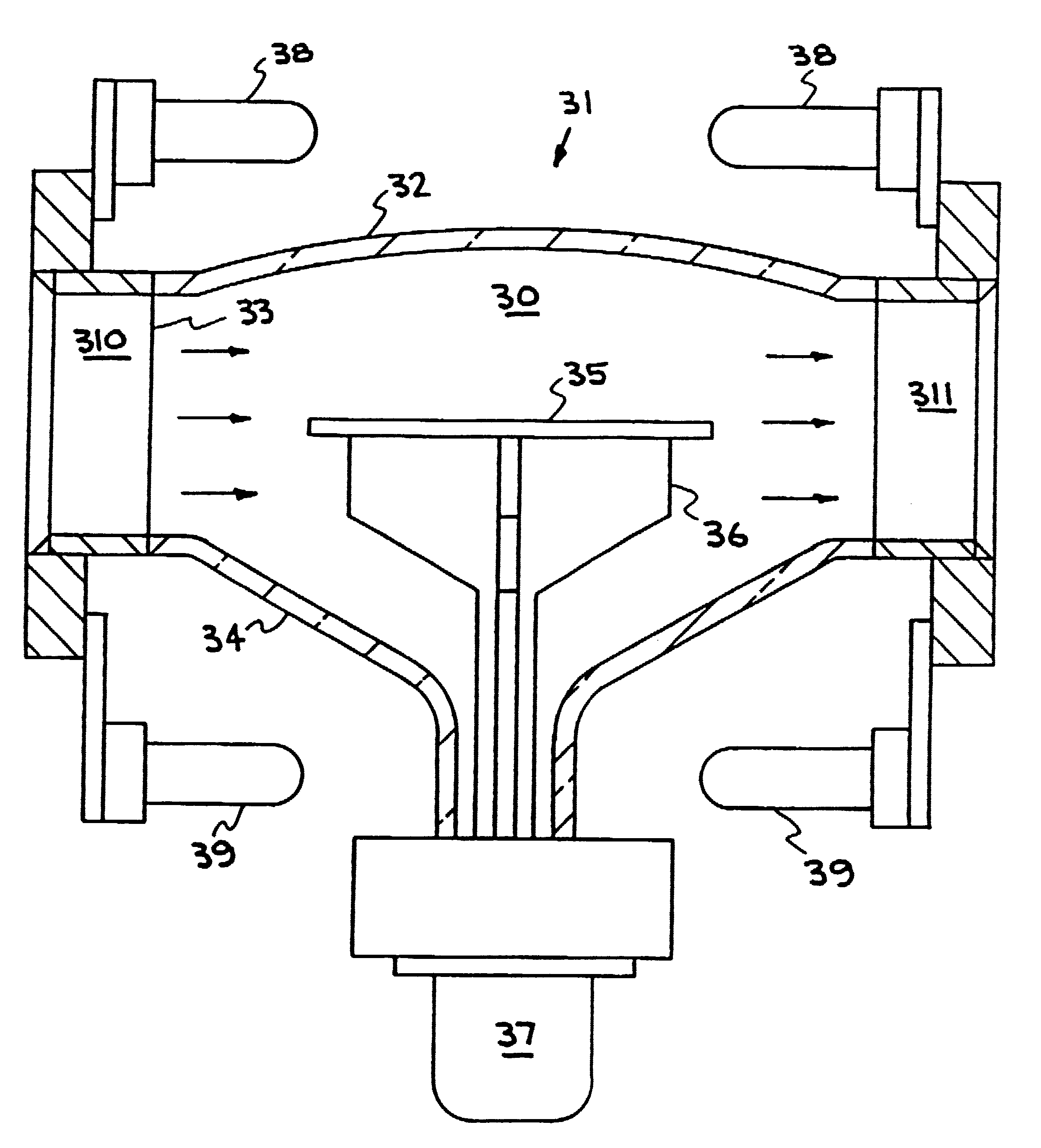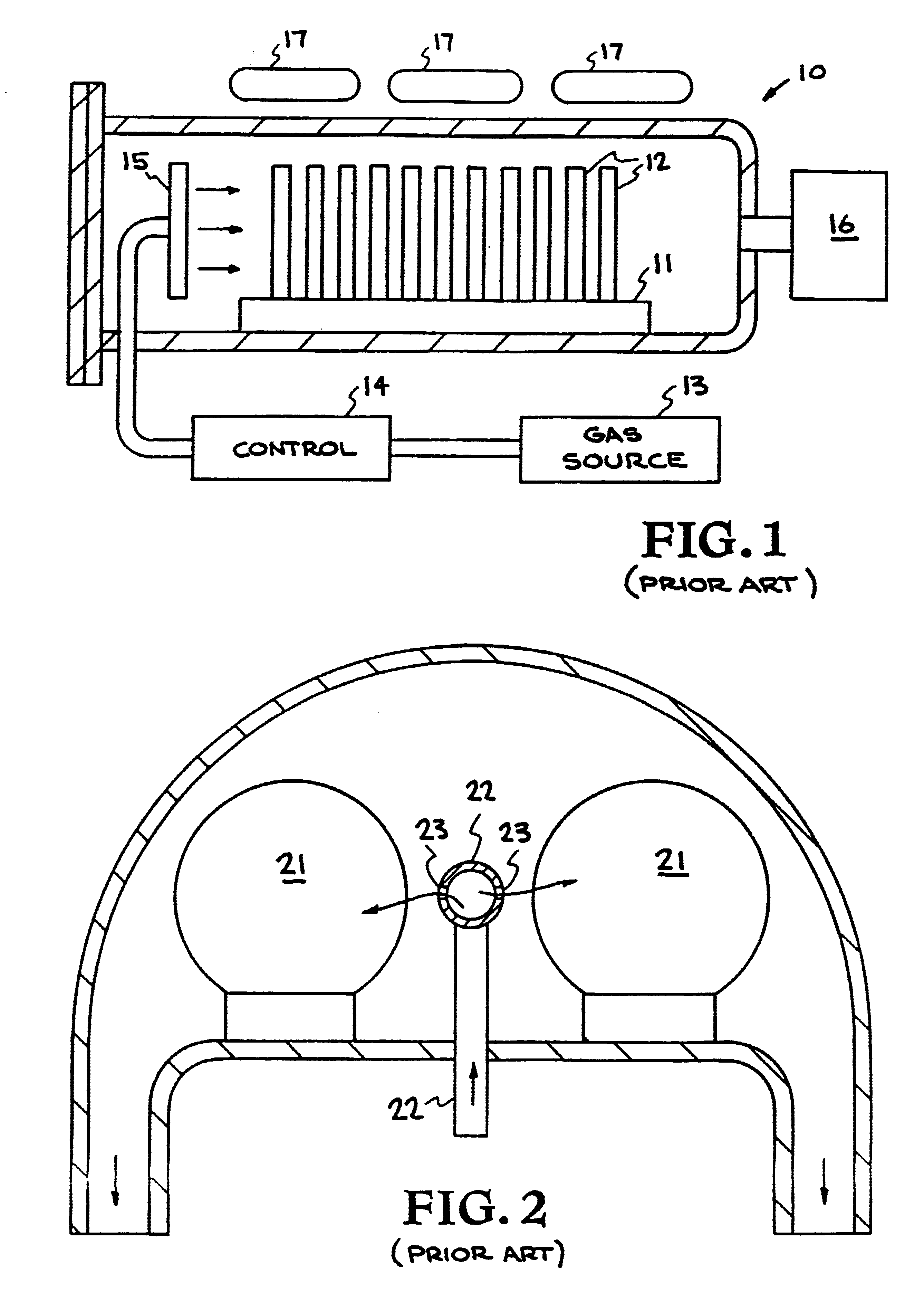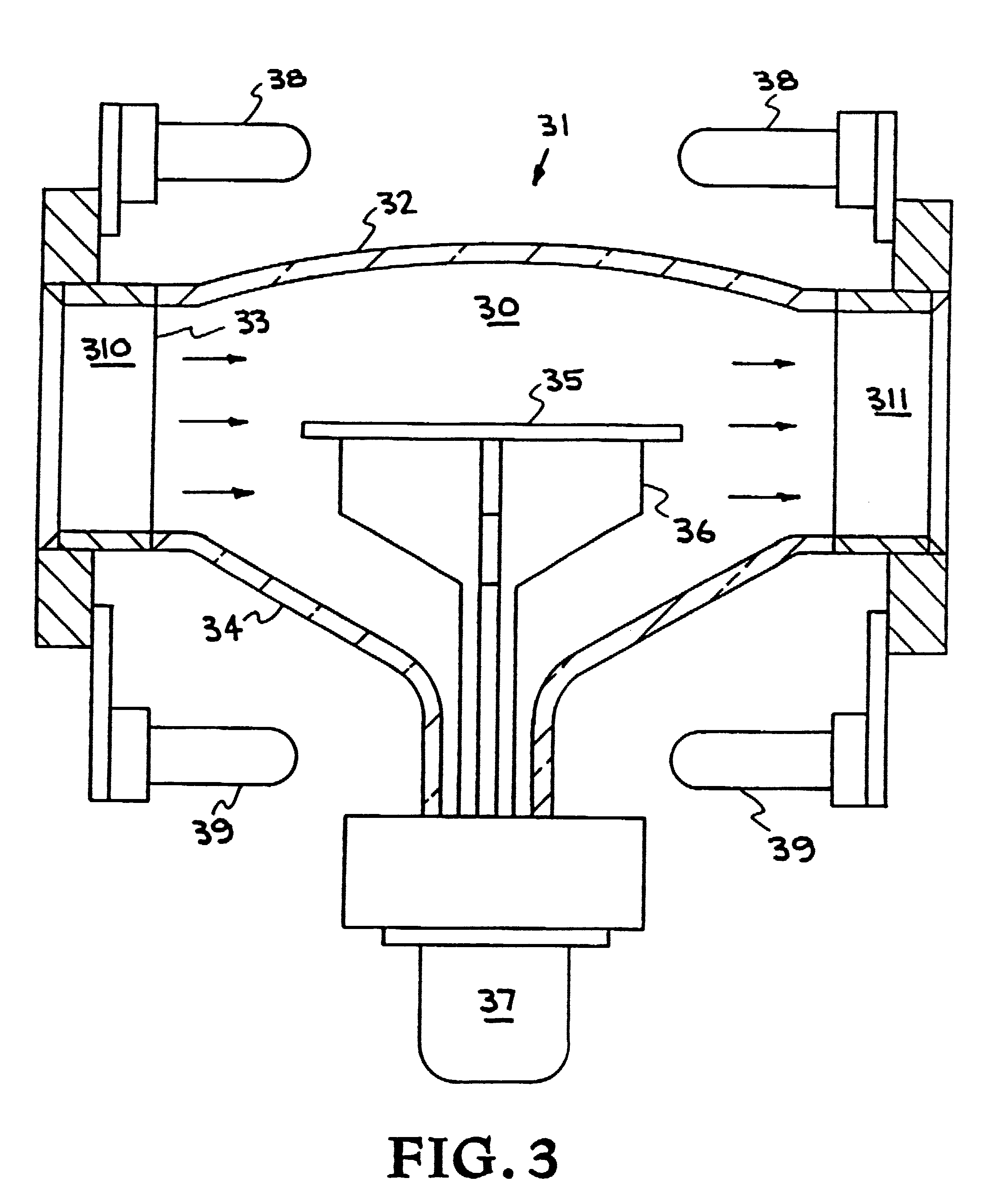In situ method for cleaning silicon surface and forming layer thereon in same chamber
a technology of silicon surface and in situ method, which is applied in the direction of coating, chemical vapor deposition coating, coating, etc., can solve the problems of multiple wafers being handled, the yield of impurities and contaminants is unacceptable, and the yield of semiconductor devices is unacceptabl
- Summary
- Abstract
- Description
- Claims
- Application Information
AI Technical Summary
Problems solved by technology
Method used
Image
Examples
Embodiment Construction
The present invention is a method for cleaning a silicon surface of a semiconductor wafer in a vacuum chamber within a first temperature range in the presence of hydrogen gas; then cooling the wafer down to a second temperature range; and then forming a layer of either polysilicon or oxide over the cleaned surface within this second temperature range without removing the cleaned wafer from the chamber.
For purpose of illustration, the present process is described with reference to FIG. 3 which illustrates a single wafer reactor 31 which includes a top wall 32, side walls 33, and a bottom wall 34 that define a chamber 30 into which a single semiconductor wafer 35, having a silicon surface, is loaded. Top wall 32 and bottom wall 34 are both substantially transparent to light, at least of infrared frequency, to allow external radiant heating of wafer 35 within chamber 30 as will be described below. Typically, top wall 32 and bottom wall 34 are formed of a high strength, transparent mate...
PUM
| Property | Measurement | Unit |
|---|---|---|
| temperature | aaaaa | aaaaa |
| pressure | aaaaa | aaaaa |
| pressure | aaaaa | aaaaa |
Abstract
Description
Claims
Application Information
 Login to View More
Login to View More - R&D
- Intellectual Property
- Life Sciences
- Materials
- Tech Scout
- Unparalleled Data Quality
- Higher Quality Content
- 60% Fewer Hallucinations
Browse by: Latest US Patents, China's latest patents, Technical Efficacy Thesaurus, Application Domain, Technology Topic, Popular Technical Reports.
© 2025 PatSnap. All rights reserved.Legal|Privacy policy|Modern Slavery Act Transparency Statement|Sitemap|About US| Contact US: help@patsnap.com



